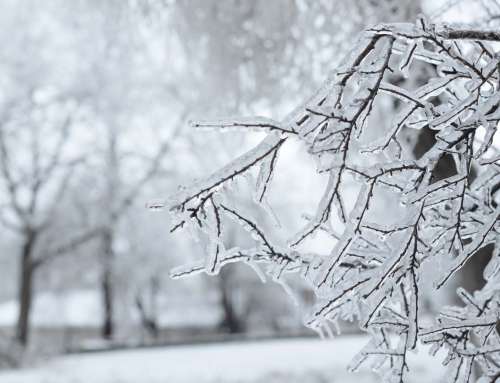The most common contributors to trees falling over during high winds and rain are soggy soil and a compromised root system. Serious injuries and major property damage can occur when trees come crashing down during high-wind and heavy rain events.
So Why Do Trees Fall Down?
As a boat in troubled water is secured by an anchor, a tree’s roots provide strength to withstand storms. Roots are a tree’s anchor, and the soil is its grounding foundation. When wind and rain are abundant, a tree’s roots and soil hold it in place. For this reason, the soil and roots must both be in a healthy state to stabilize and protect the tree from the harsh elements.
Soil Composition
Most healthy trees can weather brief periods of high winds and heavy rain from thunderstorms, but when the ground is saturated, tree roots can lose ground in the soil and an entire tree can topple over. Different soils have varying water retention rates.
- Clay soils are more compact and retain more water for longer periods. Soil that remains “waterlogged” can result in rotting of the roots.
- Sandy soils drain water very quickly, resulting in a tree not receiving enough water or nutrients if it does not have deep roots. The sparse nature of sand makes it unstable and very easy for a tree to fall.
- Loam soil, a soil that combines sand, silt, and clay in equal amounts, provides the ideal base for root development and nutrition absorption.
Root Systems
Maintaining a healthy root system is important. If roots are shallow, weak, or compromised in any way, the overload of rain followed by a strong wind can easily uproot a tree. Most roots are only 18-24 inches below the ground. When the soil becomes oversaturated, the water is replacing the needed oxygen for root development, compromising the integrity of the tree root-trunk strength.
- Younger trees may have shallow or weak undeveloped roots, which make them more susceptible to trees falling over.
- Taller trees are more susceptible to falling than shorter trees due to the increased canopy weight, adding to its imbalance.
The best way to protect yourself from trees falling down unexpectedly is to:
- Look for dead or falling branches, excessive leaning, fungus growth near the roots, cracks on the trunk.
- Always inspect your trees after each storm.
- Eliminate any unstable trees on your property.
- Implement a tree maintenance routine to ensure the health of your trees from root to canopy.
- Call a tree expert if you are unsure, for an expert evaluation.


